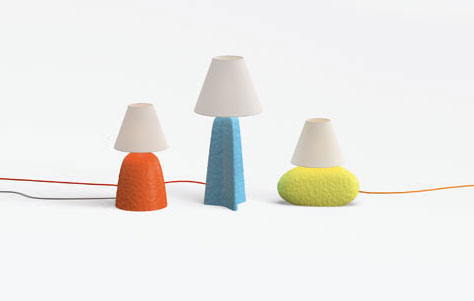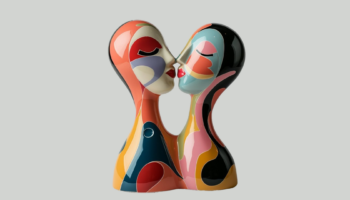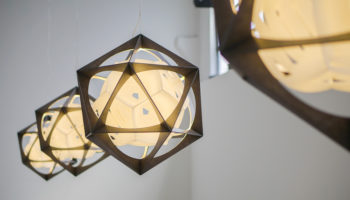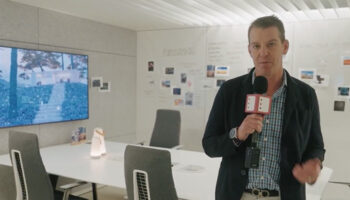The Glaze Lamps Collection by Anders Ruhwald for Established & Sons
Let me apologize in advance to designer Anders Ruhwald for the odious comparison I’m about to make, but I can’t resist… Because the designer’s recent Glaze Lamps collection for U.K. outfit Established & Sons reminds me of nothing less than my second grade ceramics masterwork, which was, of course, a formless lump of glazed clay which I elected to identify as an “ashtray.”
The Glaze Lamps Collection. Desgined by Anders Ruhwald. Manufactured by Established & Sons.
The Glaze Lamps Re-contextualize Classic Forms
The “classic” mentioned above is not in reference to my blessedly brief career as a potter, but rather the iconic modern forms of the cone and the circle. As with many youngsters forced into ill-considered experimentation with ceramics, my output was woefully inadequate. To the contrary, Ruhwald’s unorthodox yet elegant Glaze Lamps begin with the notion of working close to one’s material and forms it into sublimity.

The designer’s process involves copious amounts of trial and error, an approach that led to the “accidental” creation of the Glaze Lamps: “In a sense they were discovered, not designed, because Ruhwald experiments with surfaces, textures and materials until he finds the right result.”
In the case of the Glaze Lamps, that result occurred through Ruhwald’s use of a clay coiling process that leaves the literal imprint of the passage of the Potter’s hand. The final look is unconventional, yes, but also elementally appealing, putting me in mind of the epochal passage of nature, as seen in such marvels as a brimming bed of coral, or the ancient ripples left on the sand by the former flow of a long-dead river.
Via Interior Design.
About the Manufacturer: Established & Sons boasts an enviable line-up of collaborating designers. In 2011 alone, the company partnered with the likes of Ronan and Erwan Bouroullec, Matali Crasset, and Konstantin Grcic. The draw for such talents must be E&S’s yen for new technology, their openness to experimentation, and their consistent production of “pieces of arresting beauty.” Examples of the latter are many and varied, but l find it hard to surpass the silken silhouette of the Audrey Light, the perspectival gamesmanship of the Zero-In Table, and the bold bright moxie of the Glaze Lamps.




Leave a Reply